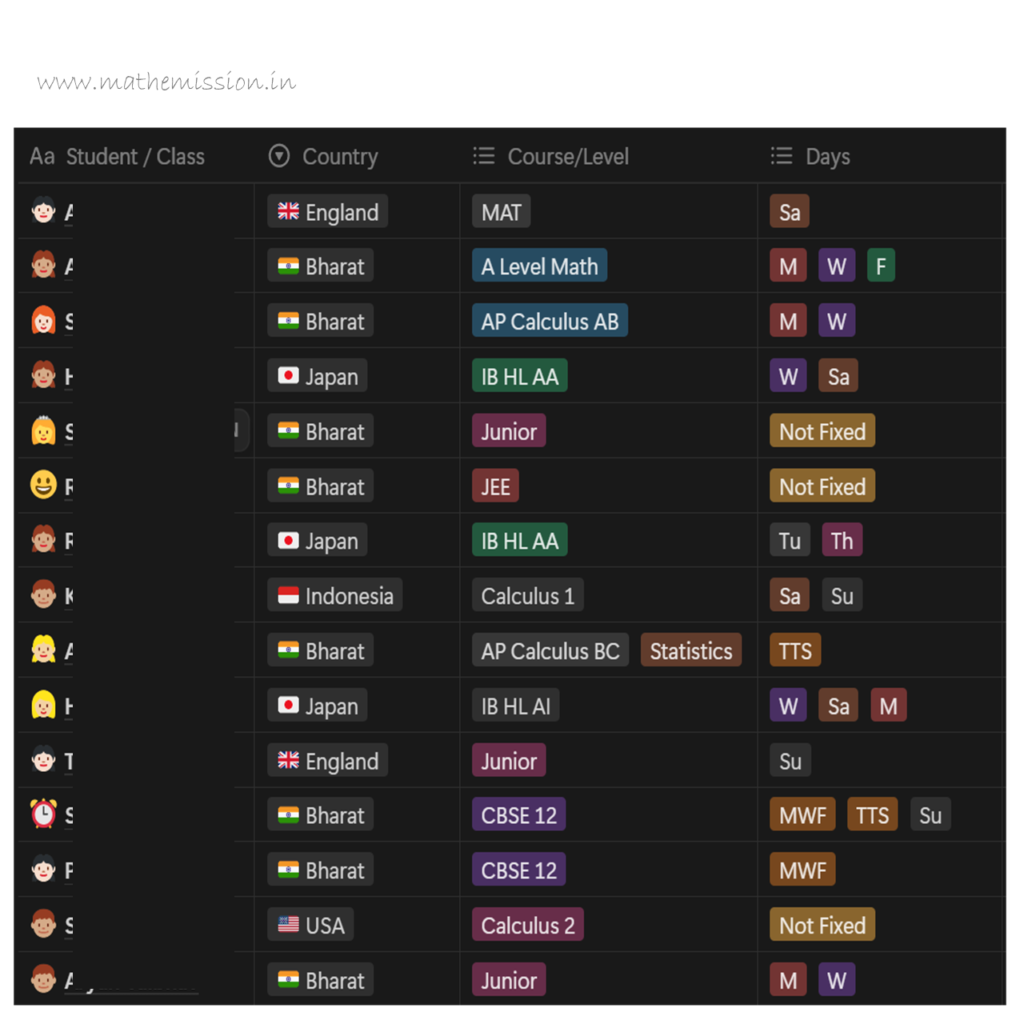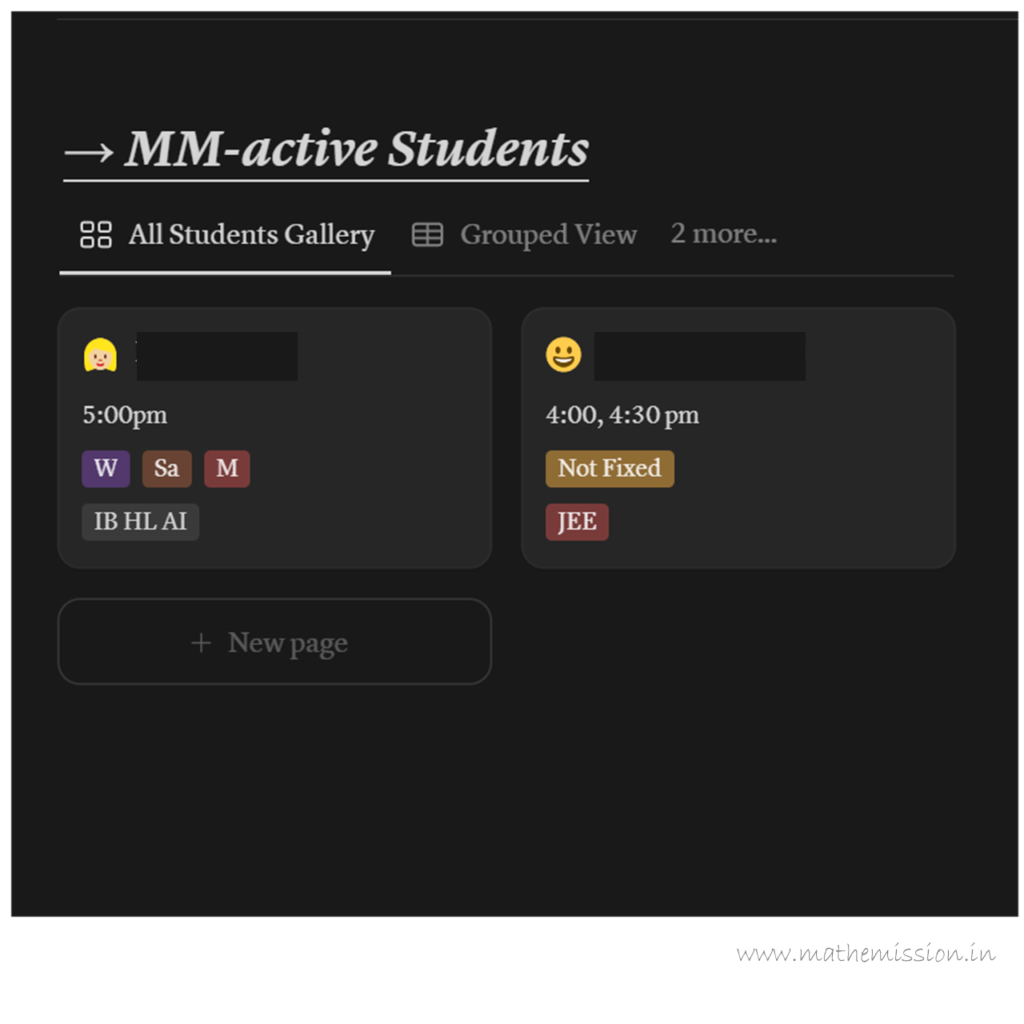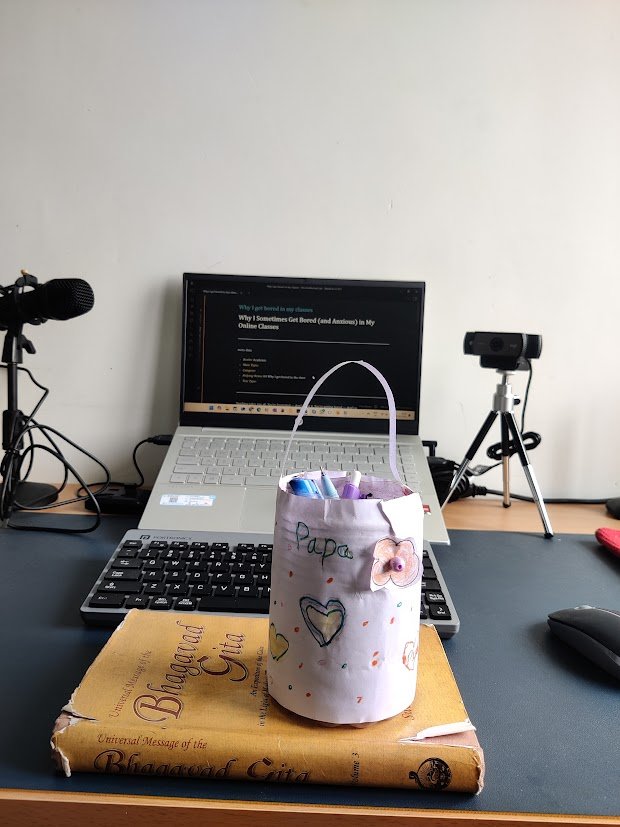Teaching takes you all. You’re frustrated — don’t show it. You’re getting bored — don’t sound it. You’re tired — keep smiling.
Teaching is my vocation. But sometimes, it vexes.
A few years ago, I was working as an online tutor— teaching students from different countries, time zones, and learning rhythms. I said yes to every opportunity. I was growing, expanding. A proud freelancer, working from home, tutoring students across continents, and charging in dollars. I felt global. I felt unstoppable.
Screenshot of my student tracking dashboard in Notion.👇🏻


The calendar overflowed. The money flowed in too. On paper, it looked like I was thriving. Balancing ten online classes in shorts and a T-shirt, with a cup of tea by my side, felt like freedom.
But with every sip of tea, something else seeped in..
Boredom.

This wasn’t the trivial boredom of scrolling your phone in a waiting room. It was something deeper. The boredom seeped in when my days were filled with repetition, when connection faded, and when teaching started to feel like a performance on autopilot.
A class became just another tab in a long day of screens.
I didn’t want to admit it. Teachers don’t get bored, I told to myself. We’re the ones who inspire, right? We’re supposed to show up with energy, with clarity, with care.
But the more I ignored, the clingier it became. A habit has its own loyalty.
Eventually, I stopped acting and began to ask myself — why was I feeling this way? And slowly, patterns began to emerge.
In the beginning, it had to do with content. I remember those early days of online teaching, fumbling through unfamiliar material, often from undergraduate courses I hadn’t taught before. I wasn’t fully present — I was guarded, cautious, scanning my own notes while trying to sound confident. Without confidence, it’s hard to improvise, to flow. When there is no flow, there is no joy. Thankfully, that phase passed.
As I gained experience, that challenge faded. But boredom didn’t. It just changed form.
Now, it often arrives in silence. I prepare a thoughtful lesson, log in on time, speak from the heart, ask a question… and all I hear is the hush of muted mics on a wall of black rectangles. No nods. No curiosity. Just a request to repeat. Or a doubt — “Will this come in the exam?” In that moment, something in me quiets too. I came for a conversation. But the conversation has left the room (read: Zoom) — taking with it its bag of stories, beauty, context, rigor, and the quiet thrill of mathematics. Enter the marksman, equipped with past papers and shortcuts. Boredom follows.
There are days when I haven’t had time to prepare properly, not because I didn’t want to, but because I was overbooked and exhausted. On those days, I piece things together as I go. And that kind of teaching , where you’re patching instead of creating, becomes dull. Teaching may dig out your knowledge, but it’s preparation that polishes it until it shines.
Even the physical world intrudes. On slicky, humid afternoons, when I’m sneezing or sweating, it’s hard to focus on teaching. The body complains, the intellect refuses to think, and the mind slips into the boredom of its surroundings. Teaching is a gentle exhale, but what if the air around you resists the inhale? In such moments, even boredom feels physical, clinging to your breath, clouding your mind.
And then there was the issue of timing. Teaching sessions squeezed between other responsibilities, or placed so early they steal sleep, started to feel like chores. It’s hard to be present when the clock ticks faster than your thoughts. The packed planner looks colorful on screen, but slowly drains the color from your personal life. You skip moments of laughter with family and friends, just to wear a practiced smile in front of a lifeless plastic screen.
But here’s the shift that helped me: I stopped seeing boredom as a flaw. I began to treat it like a signal. It told me when I was out of sync — with my schedule, with my energy, with my students, or even with myself.
So I started listening. Slowing down. Spacing my classes more mindfully. Small rituals found their place before teaching — a deep breath, a moment of silence, a set of well-prepared notes. Four classes a day became my upper limit. Mondays, I kept for myself. Between sessions, I left an hour to breathe. And whenever possible, I said no to timings that clashed with family time. I set clear rules for the courses I would accept. I let go of students who were late, silent, and disinterested.
I laid down my rules and trimmed the student list to what truly fit.👇🏻


Primarily, I stopped pretending everything was fine when it wasn’t. I accepted that I’m human, not a doubt solver machine. And a human deserves space, to reflect, to rest, and to respond.
Teaching is still my calling. It still moves me, challenges me, fulfills me. But now I understand the value of uncluttered blocks on the calendar. I’ve learned that even the thing you love can wear you thin. And when that happens, it’s not failure — it’s feedback.
Boredom still comes — but now, as a signal.
A signal that I’m overwhelmed with work.
A signal that some unread book is calling.
A signal that a hobby is slipping away.
A signal that my family needs me.I smile back. I sit back.
Because sometimes, sitting back is better than inviting a setback.
My schedule is full, but my priorities are clear..👇🏻

If you’ve ever felt that silent tug of ‘boredom’, not loud enough to stop you, but deep enough to dull you, know this: you’re not alone. Your boredom doesn’t mean you don’t care. It means you’re paying attention.
And maybe, that’s the first step back to connection.

